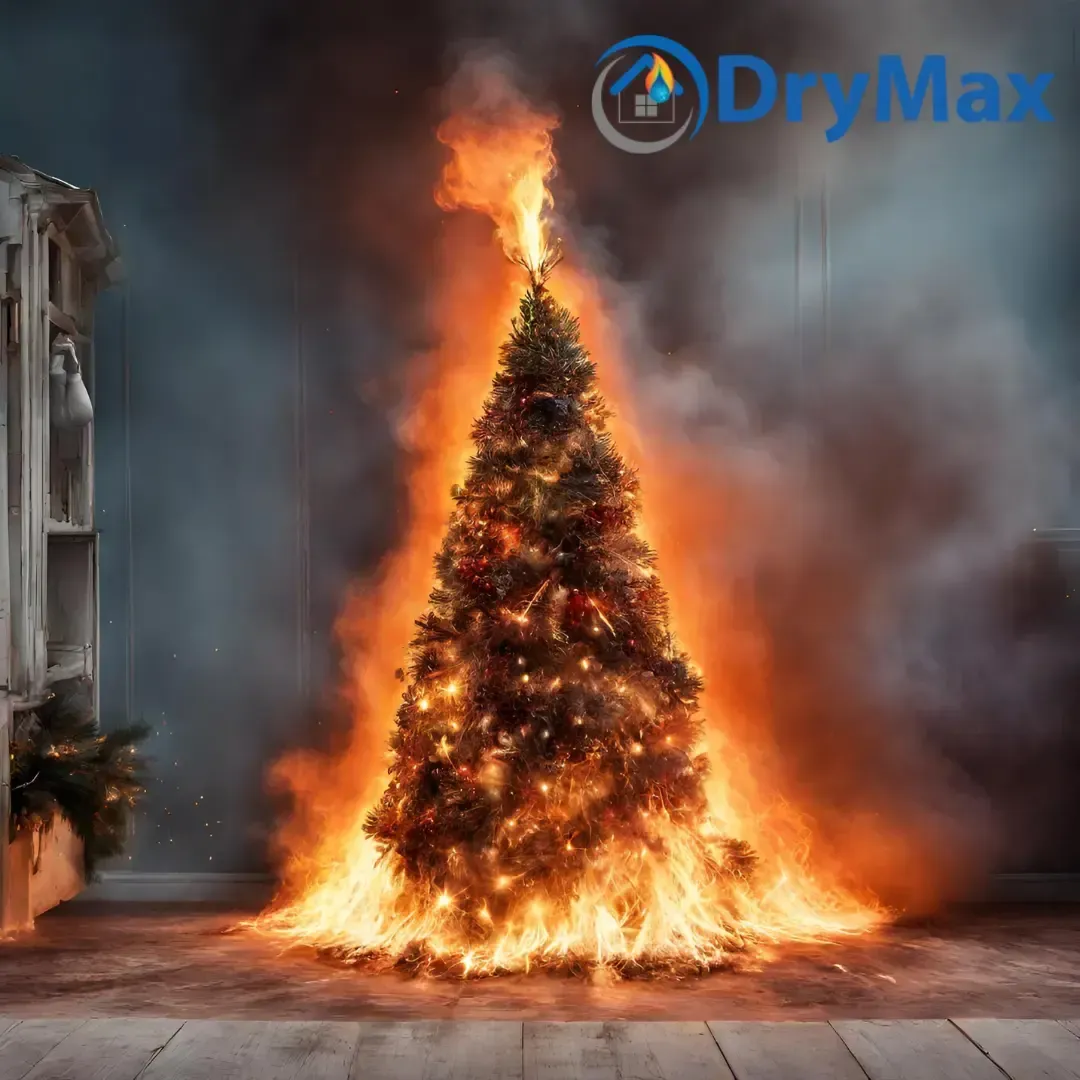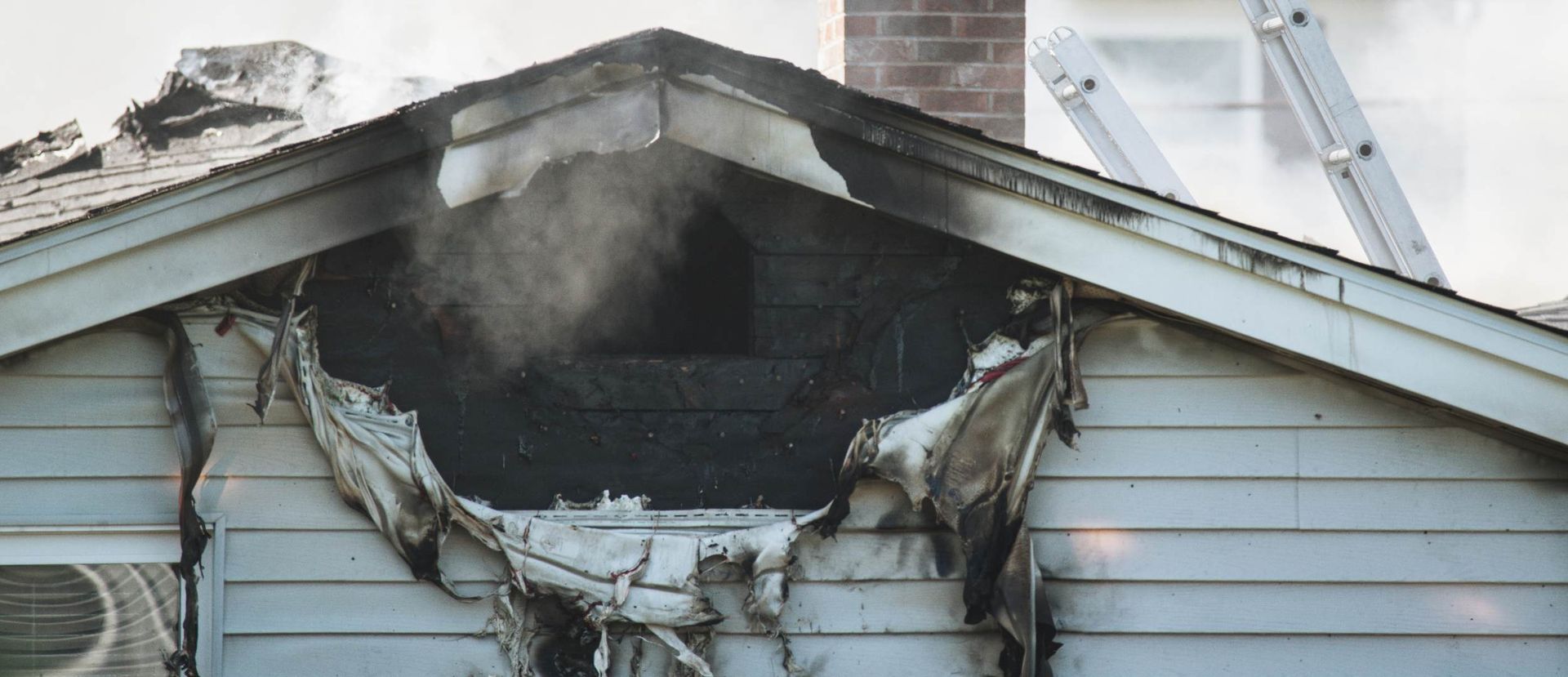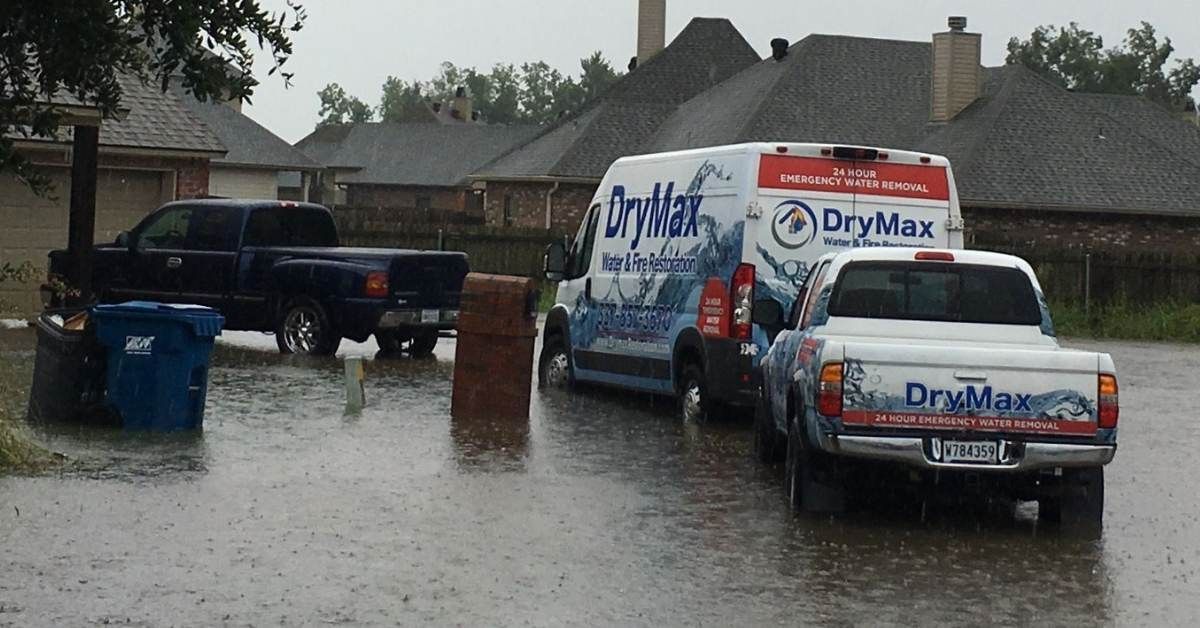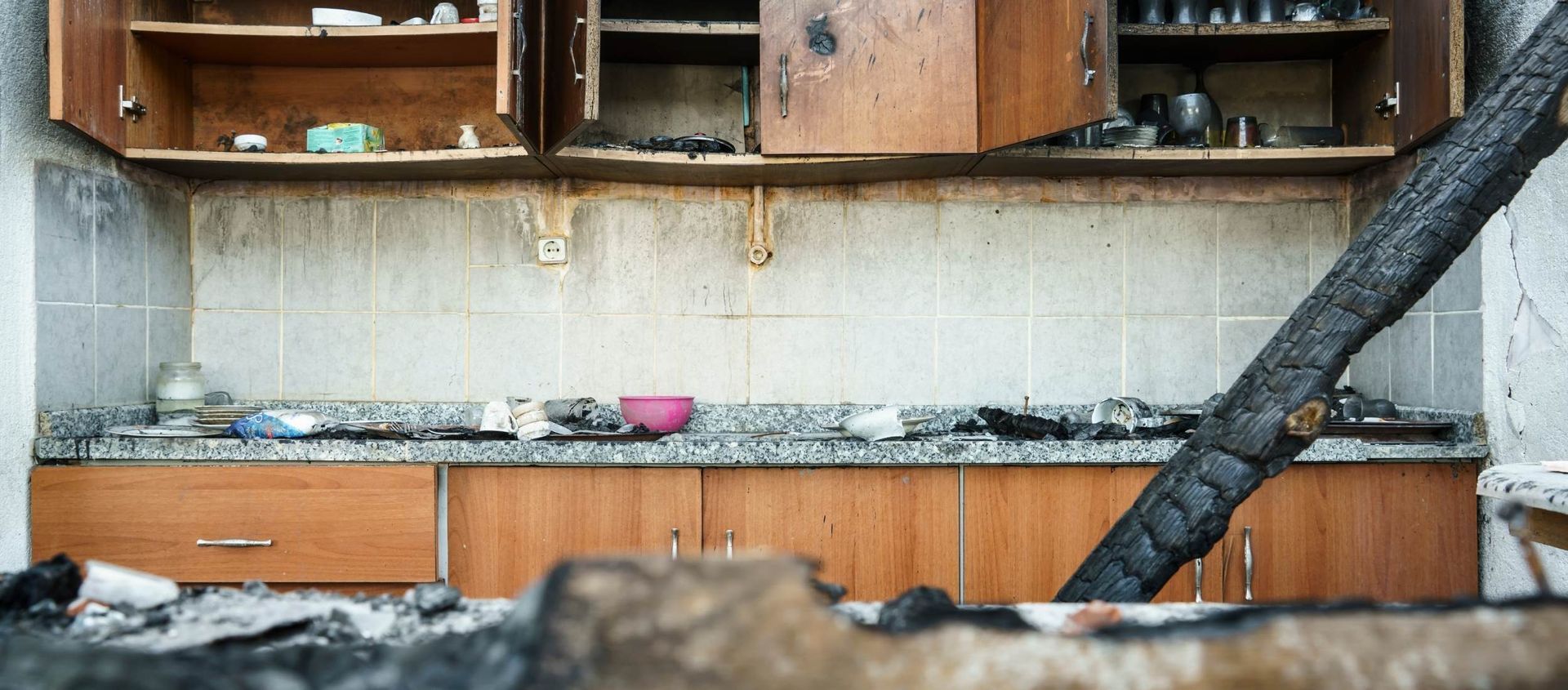Why and How Christmas Tree Fires Occur
Fire Restoration Mandeville, LA

Christmas tree fires, while relatively infrequent, can be extremely hazardous when they do occur. These fires often result in significant property damage, injuries, and even fatalities. Understanding the causes and mechanisms of these fires is crucial for prevention. Fire Damage in Mandeville, LA is something to dread, but that shouldn’t mean you stop living your life, including having a beautiful Christmas tree
Causes of Christmas Tree Fires
- Electrical Problems: Almost one-third of home Christmas tree fires are caused by electrical issues. These include malfunctioning or faulty lighting equipment, overloaded circuits, or damaged electrical cords. Electrical failures or malfunctions caused nearly half of the tree fires, often igniting the tree through sparks or small electrical fires. Decorative lights with live voltage were involved in over 20% of these instances.
- Dry Trees: A primary concern, especially with real trees, is the risk posed by drying out. A well-maintained Christmas tree can significantly reduce fire risk, as a well-watered one is less likely to catch fire than a dry one. Live trees typically last about four weeks after purchase, and keeping a dry tree in the home increases the likelihood of a fire. Watering the tree regularly and disposing of it once it becomes dry is important. Even a well-watered tree should be removed within four weeks of being brought into the home.
- Heat Sources: Placing Christmas trees too close to heat sources is another significant risk factor. Nearly a quarter of Christmas tree fires occurred because a heat source was located too close to the tree. This includes open fires, heaters, fireplaces, radiators, space heaters, candles, or heat vents. Keeping the tree at least three feet away from these sources is essential.
- Artificial Trees: While artificial trees are generally created to be fire retardant, they are not immune to fire risks. Electrical malfunctions can ignite plastic artificial trees, so the same tree placement and decoration precautions should be applied.
- Improper Disposal: The method of disposing of Christmas trees also presents risks. Discarded trees, particularly those left outside, can be a target for arsonists. Two-thirds of fires related to Christmas trees stored outside residential properties were set intentionally, with a majority occurring in January. Discarding the tree soon after the holidays is advisable to mitigate this risk.
Christmas tree fires can be very intense due to the nature of the tree itself, often leading to more significant damage and higher injury and fatality rates than typical house fires. These fires cause $16.2 million in property damage, six civilian deaths, and 16 civilian injuries annually in the U.S. In the U.S., Christmas trees start approximately 210 house fires per year.
Immediate Steps if a Christmas Tree Fire Occurs
Quick and decisive action is crucial in the unfortunate event of a Christmas tree fire. Such fires can occur despite the best preventive measures, posing severe risks. Here's a step-by-step guide on what to do.
- Evacuation is a Priority: The first and immediate response should always be to evacuate the premises. The rapid spread of fire and the production of toxic fumes, especially from artificial trees, can create a hazardous environment. Safety of life should always take precedence over property or possessions.
- Calling Emergency Services: Once everyone is safely outside, the next critical step is to call emergency services. Providing them with specific details, such as the fire starting from a Christmas tree, can help them prepare appropriately for the situation.
- If Safe, Use a Fire Extinguisher: If the fire is still small and manageable, and you have quick access to a fire extinguisher, you might attempt to douse the fire. This step should only be taken if it does not endanger anyone. The PASS technique (Pull, Aim, Squeeze, Sweep) can be effective.
- Handling Larger Fires: If the fire has grown beyond a small, manageable size, do not attempt to extinguish it. Fires can escalate rapidly, and the risk to personal safety increases significantly.
- Post-Evacuation Actions: Close doors behind you as you exit, which can help contain the fire. Once outside, stay out. Re-entering a burning building can be fatal. Wait for the fire department to arrive and let them take over, as they are professionally trained to handle these situations.
- Dealing with Toxic Fumes: In the case of artificial trees, be aware that burning plastic can release harmful fumes. Ensuring you are in a well-ventilated area away from these fumes is important.
It's essential to have a well-established fire evacuation plan before such an event occurs. Regular drills, knowing multiple escape routes, and having a designated meeting point outside your home are critical components of this plan. Moreover, ensuring that smoke alarms are functional and checked regularly can provide an early warning, increasing the chances for a safe evacuation.
The immediate response to a Christmas tree fire involves prioritizing safety through evacuation, contacting emergency services, and not taking unnecessary risks to extinguish the fire. Combined with prior preparation and awareness, these steps can significantly mitigate the risks associated with Christmas tree fires.
Fire Restoration Services in Lafayette, LA
Fire damage restoration is crucial in recovering from a Christmas tree or home fire. This process involves several key steps and services that help restore a property to its pre-fire condition.
- Assessment of Damage: Fire damage restoration begins with a thorough assessment of the fire damage. This includes evaluating the extent of the fire, smoke, and soot damage, and any water damage. Professionals will inspect the property, determining what can be salvaged and what needs replacing.
- Water Removal and Drying: If water was used to extinguish the fire, the first step in restoration is often water removal. This is crucial to prevent mold and mildew growth. Dehumidifiers and air movers are commonly used to dry out the affected areas.
- Soot and Smoke Removal: Fires leave behind soot and smoke that can be harmful and cause lasting damage if not properly cleaned. Soot can corrode surfaces, and smoke can leave persistent odors. Restoration experts use specialized equipment and methods to remove soot and smoke from surfaces.
- Cleaning and Sanitizing: The process includes thoroughly cleaning all items and structures damaged by the fire. This step is essential for health, safety, and restoring the property's appearance. Professional restoration services have the tools and methods to clean and sanitize effectively, including using air scrubbers and fogging equipment to eliminate odors.
It is important to recognize that fire damage is often accompanied by water damage, mainly because of fighting the fire. Teaming up with a us, a water and fire restoration company in Mandeville, LA will save your time, energy, and money. We can handle it all. Water Damage in Mandeville, LA is a serious problem that only gets worse when left alone.
Christmas should be a time of magic, family, and joy. A Christmas tree fire is one of the quickest ways to ruin the holidays. First and foremost, you must be careful and show the tree respect because the danger of a fire is real. It would be best to have a safety plan if the worst happens. Hopefully, you never need to use your emergency plan. If the unthinkable happens and you need water dagame restoration in Mandeville, LA, you should make us your first call.




